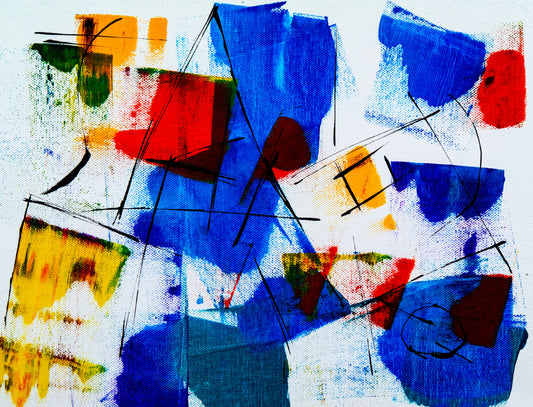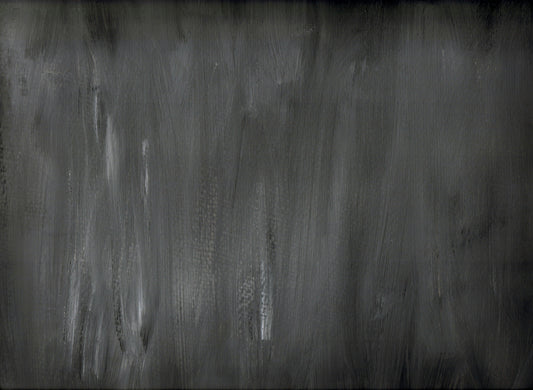
Turning Thoughts and Feelings into Art
Art is more than paint on a canvas or ink on paper. It’s a form of communication that transcends the barriers of language, time, and space. Art, in its countless forms, is the language of the soul, the medium through which we can express our deepest beliefs, hopes, and dreams. Today, I invite you on a journey—a poetic exploration—of how art can carry messages that reflect your personal stand.
The Power of Art to Convey Messages
Art is a vessel. Through it, we can capture the complexities of life and transform them into something tangible, something visible. Every brushstroke, every shadow, every carefully sculpted line is a whisper of intention, carrying with it a message meant to move, inspire, or provoke thought.
Art as a Universal Language
Words sometimes fail us, but art speaks in a tongue understood by all. Whether it’s the vibrant hues of Van Gogh’s "Starry Night" or the serene stillness of a Japanese ink wash, art needs no translator. It’s universal—an abstract conversation between the artist and the viewer, where interpretation is left to the soul.
Beyond Words – The Emotional Depth of Artistic Expression
Art invites emotion into every corner. What words can’t fully describe, a single stroke of a brush or a splash of color can capture. In that space, where language falters, art remains, echoing the nuances of the human condition—joy, sorrow, rebellion, love.
Defining Your Own Stand Through Art
Art is a mirror, but it’s also a lens through which the world can see who you are and what you stand for. When you create art with purpose, you invite others to see your perspective. Your work becomes a voice for your beliefs, an extension of who you are.
Reflecting Personal Beliefs in Creative Expression
What does your art say about you? Do the lines of your sketches bend in defiance, or do the colors of your painting scream liberation? Art offers you a stage to reflect your beliefs, values, and passions, letting the world witness your inner truths without uttering a word.
Art as an Extension of Self
Your art is a piece of you—a silent witness to your thoughts and emotions. When your brush meets the canvas, or when your camera captures a fleeting moment, it’s as if your inner self finds an outlet, and a new form of language begins to flow. This is where your stand takes shape.
The Silent Revolution of Visual Statements
Art doesn’t always shout, but it doesn’t need to. Sometimes, the quietest works are the most powerful. A painting can speak volumes about social justice, freedom, or equality without a single word being written. It’s this subtlety that gives art its revolutionary potential.
The Interplay of Symbolism and Visual Metaphors
Symbolism and metaphor are powerful tools in the artist's toolkit. Through them, complex ideas are distilled into simple, striking images that remain with the viewer long after they’ve left the gallery.
The Hidden Power of Symbols in Art
A clenched fist, a broken chain, an open eye—all are symbols that carry deeper meanings. These symbols can turn your art into a message of protest, of hope, of resistance. In the realm of art, a single image can represent an entire movement.
Metaphors That Speak Louder Than Words
Sometimes, a metaphor can do what words cannot. When Salvador Dalí painted melting clocks, he wasn’t just creating a surreal landscape—he was commenting on the fluidity and impermanence of time. In your art, metaphors can become the bridge between your inner world and the outer reality, allowing you to communicate powerful, layered messages.
Art Forms That Amplify Personal Stands
Each form of art offers a different way to express yourself, and some lend themselves particularly well to making bold, impactful statements.
The Bold Statements in Street Art
Street art is rebellion in its purest form. With every mural or graffiti, street artists reclaim public spaces, turning blank walls into platforms for political and social commentary. Think of Banksy’s work—simple, bold, and always with a message.
Photography: Capturing Moments That Speak
A photograph can freeze time, capturing not just the image but the essence of a moment. Photographers like Dorothea Lange, who captured the plight of migrant workers during the Great Depression, used their art to tell stories that words alone couldn’t convey.
Sculptures: The Physical Manifestation of Ideas
In sculpture, ideas take physical form. The rough texture of stone, the smooth curve of bronze—they all become symbols of resistance, unity, or struggle. Auguste Rodin’s “The Thinker” remains a powerful representation of contemplation and intellectual freedom.
Art Movements That Pushed Personal Boundaries
Throughout history, artists have pushed the boundaries of what’s acceptable, using their work to challenge societal norms and inspire change.
Impressionism and the Pursuit of New Perspectives
Impressionism was more than a style—it was a rebellion against the rigid norms of the academic art world. Artists like Monet and Renoir used their work to show the world through new eyes, embracing light, color, and emotion in ways never before seen.
Surrealism: A Dive Into the Subconscious Mind
Surrealism was a journey into the depths of the subconscious. Artists like Dalí and Magritte used bizarre imagery to represent the strange, often contradictory nature of human experience. Through this, they questioned the very nature of reality itself.
Abstract Art: Challenging Traditional Boundaries
Abstract art broke down the barriers of representation, allowing artists to express themselves without the confines of form or narrative. Artists like Kandinsky and Pollock showed that meaning could emerge from the chaos of lines, shapes, and color.
How to Start Exploring Art to Represent Your Own Stand
Ready to let your art reflect your voice? Here’s how to get started:
Reflect on Your Core Values
What matters most to you? Before you begin creating, think about the values and beliefs that define you. These will become the foundation of your artistic message.
Experiment with Different Art Forms
Explore different mediums—painting, photography, sculpture, or even digital art. Each form will allow you to express yourself in unique ways.
Sketching Ideas First
Start with rough sketches, letting your ideas flow without judgment. These early drafts are essential in shaping your final message.
Allowing Mistakes to Shape Your Vision
Art isn’t perfect, nor should it be. Sometimes, the most powerful messages come from mistakes, from the imperfections that give your work its soul.
The Beauty of Imperfection in Self-Expression
Embracing Flaws as Part of the Message
Imperfections make art human. The uneven brushstrokes, the slight tilt of a photograph—it’s these small flaws that breathe life into your work.
The Rawness of Vulnerable Art
Vulnerable art is honest, raw, and real. When you allow yourself to be exposed through your art, you create a connection that resonates deeply with others.
Conclusion: Art as a Mirror of the Soul
Art is not just a mirror of the world—it’s a reflection of your soul. Every piece you create is a declaration of your values




